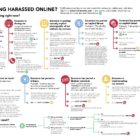top reads
GIJN Bookshelf: 7 Investigative Titles to Read in 2022
|
This latest installment of the GIJN Bookshelf includes recommendations from our global editorial team, and features titles on uncovering COVID-19 corruption, tracking the assassination of a reporter, a historical look at a pioneering female investigative journalist, and unraveling the mystery of disappearing jumbo jet that shocked the world.









